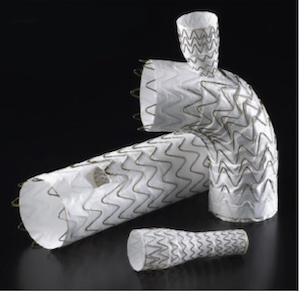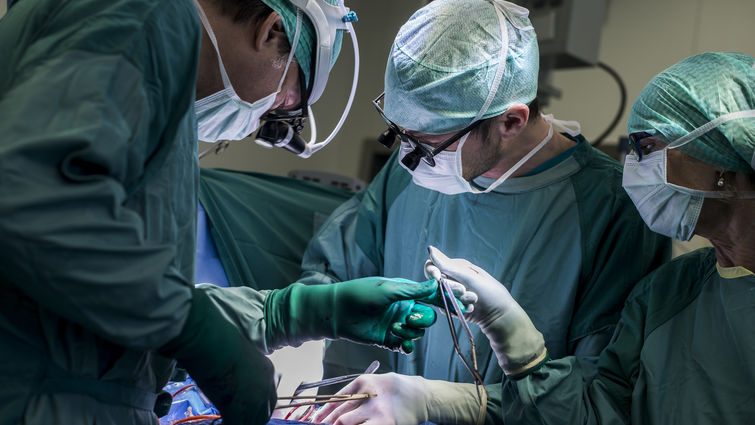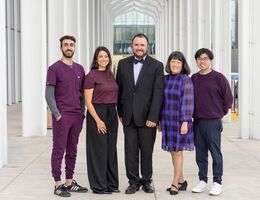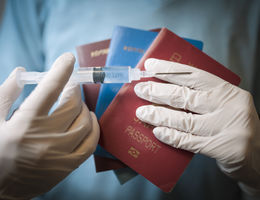

Surgeons at Loma Linda University Health now provide a minimally invasive procedure for high-risk patients needing treatment for aortic aneurysms and dissections. Allen Murga, MD, director of the aortic program, and his team are the only ones in the Inland Empire performing the innovative procedure.
Thoracic branch endoprosthesis (TBE) repairs damages such as aneurysms and dissections to the descending thoracic aorta, the largest artery in the chest. An aneurysm is the dilation of the native artery or aorta to a size where it can rupture and pose a life-threatening situation. A dissection is a tear in the artery wall creating two channels causing blood to flow towards the outside aortic wall, which also poses deadly risks.
The TBE device is a specialized stent graft designed specifically for aneurysms in the thoracic area, as aneurysms located in the chest area can be more challenging to treat with traditional stent grafts. It consists of interconnected metal mesh tubes customized to fit the patient's unique anatomy. The device is inserted into the blood vessel through a small incision in the groin and guided up to the chest area.

Once the TBE device is in place, it is expanded to fit snugly against the blood vessel’s walls. The metal mesh tubes that make up the device are carefully positioned to allow blood to flow through the vessel while supporting the weakened area where the aneurysm is located.
While the TBE device is a relatively new treatment option, Murga insists it has shown promising results. Patients who have received the device have experienced a lower risk of complications and a reduced need for additional surgeries compared to traditional stent-grafts.
Prior to the introduction of TBE, a carotid-subclavian bypass was the standard method for treating aortic aneurysms. This bypass method requires two operations; one on the neck to create more space in the arteries and another to insert the graft to properly seal after the first procedure. Important structures are located in the area a carotid-subclavian bypass is performed and if injured, can lead to high risks for the patient, according to Murga. He says TBE will open the door for many patients while avoiding the added risk of nerve damage.
“This new device shows great promise in improving outcomes for those with vascular disease,” Murga said. “I am confident that this technology will enable us to better serve our patients and provide them with the highest level of care."
If you would like to partner with a physician to learn more about thoracic aortic aneurysms, dissections, and treatment options, visit Loma Linda University International Heart Institute online or call 800-468-5432.


